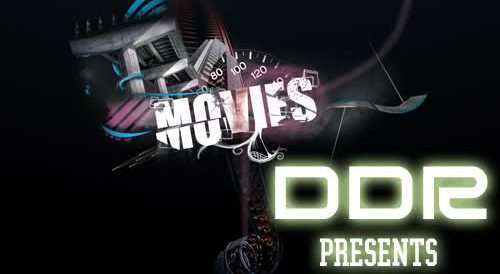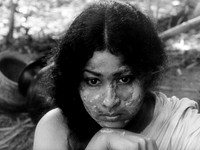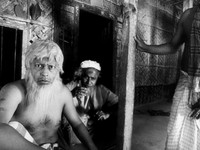Tiitas Ekti Nadir Naam (1973) - BDrip - 720p - x264 - AAC - ESub [DDR]seeders: 1
leechers: 1

Tiitas Ekti Nadir Naam (1973) - BDrip - 720p - x264 - AAC - ESub [DDR] (Size: 4.37 GB)
Description An Exclusive DDR Presentation একটি নদীর নাম - A River Called Titas - (1973) (A film by Ritwik Ghatak) BD Rip -720p - 4.37GB - 158 min - x.264/mkv - AAC (Monoaural)            The pictures are Thumbnails. Please click to see in original size. Please Read Uploader's Notes Below Tech Data:   Synopsis: Gokannaghat is a small fishing village like many others on the banks of the river Titas. The people live as a community, celebrating their festivals, sharing in each others joys and sorrows. Intertwined in their lives is Titas. The river provides them sustenance and every ritual in some way or the other involves the waters of this great river. As one villager puts it, even when they die, they need a few drops of the river water to ease their path to the next world. This film tells the tale of the tragic inter-twining of the lives of a series of characters from the village, centering around the life and determination of Basanti (Rosy Samad). As the great river dries up and changes course, the tragedy of the slow painful deterioration of places, communities, personal relationships and the very way of life of the villagers unfold before us. Comments: Based on a novel by Adwaita Malla Burman, the film is consistent with the narrative in the novel. Unfortunately, Adwaita Malla Burman was not alive to see the transformation of his novel into celluloid, having died five years before the film was made. The very authenticity of the film is perhaps also a result of the personal experiences of Burman, who had himself faced grinding poverty, not unlike the one depicted in the film. It is a haunting film embellished by graphic images of the river as well as the poverty of the villagers of Gokannaghat. There is a considerable amount of melodrama in the film. Consider the life of Basanti. She loves Kishore, but he is married off to a girl called Rajar Jhi. She then marries Subal, who dies the very next day. Rajar Jhi is kidnapped but escapes only to find that Kishore has lost his mind because of this incident. And all this is within the first 50 minutes of a 2½ hour film. But, as Ritwik Ghatak himself pointed out, if you are taken in by the melodrama, you would miss the essence of the film — this slow grinding deterioration of a way of life and how the villagers are caught up in it despite themselves. Like every film of Ghatak, Titas too experiments with cinematic technique. Consider the manner in which Ghatak jumps from story of one character to another, seemingly randomly, and yet weaves the entire series of episodes into one epic film. In 1973 this technique was not known in Indian cinema and even in the West people like Jean Luc Goddard or Alain Resnais were still developing it. Ritwik Ghatak was a filmmaker way ahead of his times. It is our tragedy that we did not appreciate the genius of this man in his lifetime. The entire film is shot on location and there are almost no studio shots. The film is embellished by some haunting images of the river Titas. In some respects, the cinematography of Baby Islam helps in translating Ghataks ideas into celluloid reality. Nevertheless, I would say that camerawork lacks originality. If you look closely, you will find that Islam uses only a few camera angles and most of the filming is quite straightforward. On the other hand use of music and sounds is masterly. Ritwik Ghatak conceived of the music and Ustad Bahadur Khan converted it into the background score. When you see the film, the sense of realism is increased manifold by skilful use of sound. I thought that the acting of some of the protagonists was poor. The acting by the young girls in the initial sequences for example, is almost embarrassing. It is made up though by some very helpful portrayals by Rosy Samad as Basanti, Rani Sarkar as Mungli, her friend and Golam Mostafa as Ramprasad among others. I had always wished for a decent copy of this film, if only because of the haunting images of the river Titas. Now at last we can see the film in a print of a quality that befits this masterpiece. The restoration of the film is wonderful. As you see the film you will forget that it was made in 1973, by a director who was impoverished and constantly in search for funds to make his films, with equipment that was outdated even in his age and times and made in a country which had just emerged from a Civil War and therefore lacked almost all facilities required for serious filmmaking. Uploader's Notes: As promised the 720p Blu-Ray rip of Titas. This one is 4.37GB or one DVD in size. The sound is AAC in order to maximise space. I could have reduced the size considerably, but I did not want to compromise on quality. While the 1080p still remains my favourite, this rip is perhaps around 90% of the quality of the visuals in the 1080p rip. The sound too is marginally poorer. Both the 1080p as well as the 720p rips are DDR exclusives, just for you. We at DDR have always tried to bring you the best of Bangla films. In the same vein, we now bring you another initiative - Retrospectives of films of Great Directors. We had earlier brought you the Gupi-Bagha films. In January we will bring you all eight feature films of Ritwik Ghatak in a single package. Every film will be ripped from the best available source and we will try and make each rip the best you can find on the net. We invite you to download and see these films. If you are new to Ritwik Ghatak, we promise that these films will open a new world of Cinema for you. And, if like us, you are a fanatic follower of Ghatak, you will be able to see his films in very good quality. IMDB Link: http://www.imdb.com/title/tt0070809/ Sample (3 min):Download from here Related Torrents
Sharing WidgetTrailer |